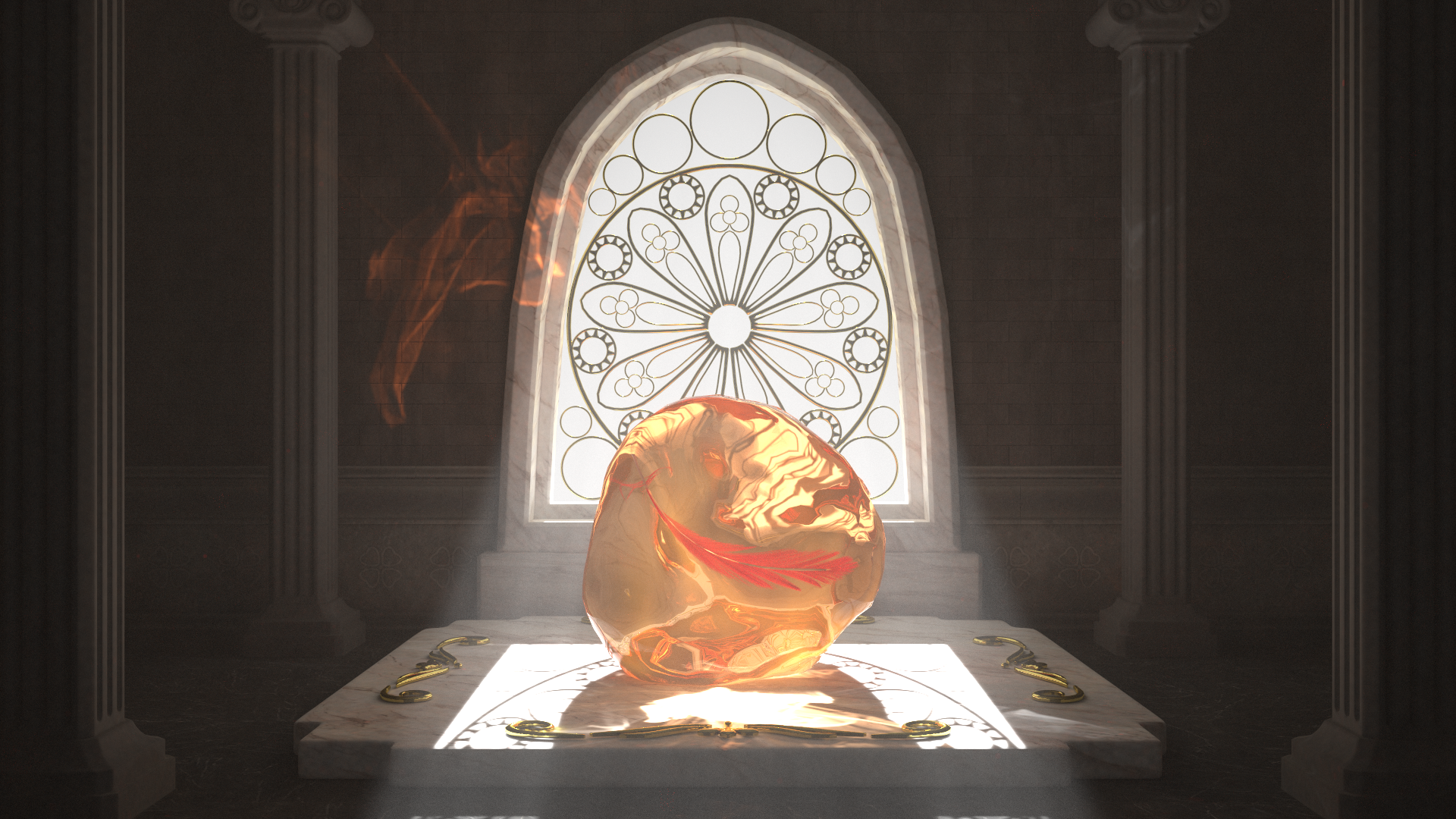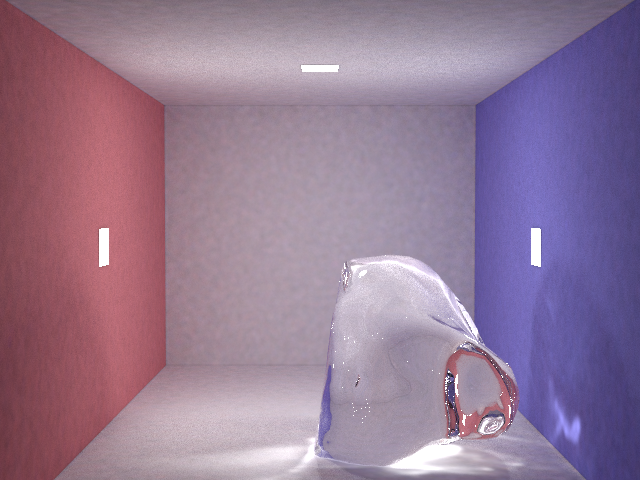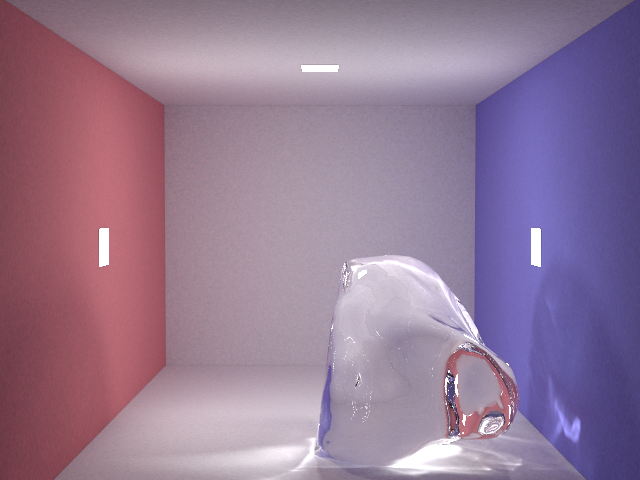Our group implemented participating media, hair BSDF and volumetric photon mapping to render this image of a feather hidden inside an amber. This image was selected as the runner-up in the rendering competition in the Rendering Algorithms course at Dartmouth. The theme for the rendering competition was "It's what's inside that counts".

If you want to learn about the technical details, the full project report is here.
My teammate, Yang Qi, was responsible for adding participating media, volumetric path tracer, microfacet BSDF and hair BSDF to our base renderer. I worked on implementing a progressive volumetric photon mapper and directional lights to achieve the caustic and light beam effects we wanted.
The photon mapper enabled us to render the caustic effect within reasonable time. Here is a comparison between path tracer with MIS (PT), photon mapper (PM), and stochastic progressive photon mapper (SPPM), rendering our caustics test scene. As you can see, photon mapper provides much faster convergence rate on caustics, and SPPM can reduce the bias on caustics caused by blurring, producing much defined edges on caustics.



